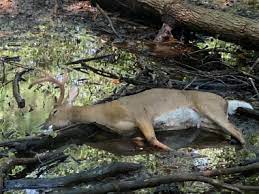Epizootic Haemorrhagic Disease:

Authorities in the UK say they are “closely monitoring” the spread of Epizootic haemorrhagic disease (EHD) that has been recorded in Spain, Portugal and Southern Italy recently.
- Epizootic Haemorrhagic Disease (EHD) is an insect-born disease caused by a virus and affecting wild and domestic ruminant species.
- It has become an emerging disease in cattle and was added to the World Organisation of Animal Health list of notifiable diseases in May 2008.
- It is a disease of animals, not humans, so there are no human or public health issues.
- The causative agent, epizootic hemorrhagic disease virus (EHDV), belongs to the Orbivirus genus.
- EHDV is transmitted between ruminant hosts by Culicoides midges, tiny biting flies commonly known as “no-see-ums” or gnats that are smaller than mosquitoes and other flies.
- Clinical signs: Fever, weakness, lack of appetite, more saliva than usual, difficulty swallowing, skin rash on the udder, bleeding (skin and internal tissues), swollen red skin near hooves, swollen lining of the mouth, mouth ulcers, difficulty in breathing and sudden death (particularly in deer).
- There is no treatment for HD in wildlife populations and no commercially available vaccine to protect against EHD.




